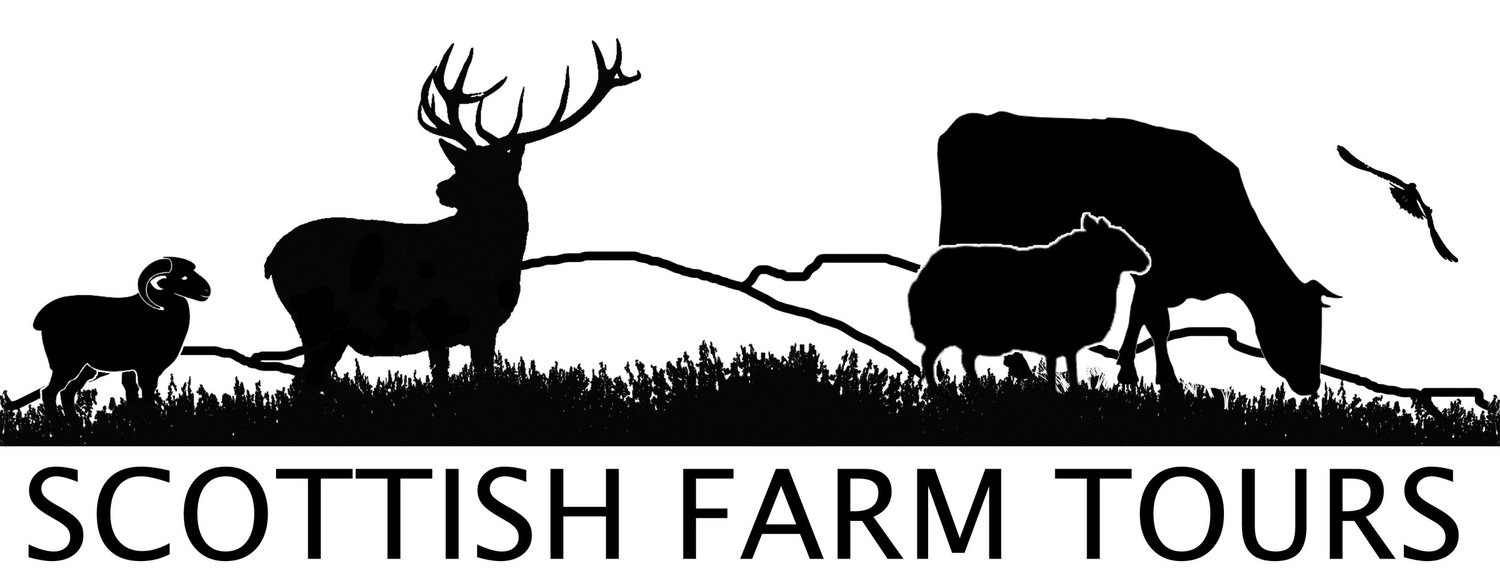Snowdrops (appropriately) in snow.
There is not a more welcome sight in winter than the first growth of the year, which for us in the far north has to be Snowdrops. We have a few plants at the front of the house,
Flour Power.
One aspect of our farming business that we are particularly proud of is the fact that we are able to grow a lot of the feed that we give the animals or source it locally. Just one way to reduce our carbon footprint and reduce food miles of the meat we sell.
The cattle and deer eat silage, hay and barley that we grow ourselves. The deer are also fed draff and dark grains. Both these products come from the whisky distilling industry and living in the midst of whisky distilleries it is an obvious feed for us to buy.
There is a third product which also comes from the distilling process and this is the ‘flour’. As its name suggests it is very light and powdery ( almost like talcum powder ) and is a by product of the malted barley. Every week we go down to the Tomintoul Distillery, which is just ½ mile away, collect ‘the flour’ and give it to our pigs.
I say ‘give it’ to our pigs because not only do they eat it, but they love using it as a dust bath as you will see in the series of photos below.
In their element.
During the winter when we are trying to get round all the farm animals to make sure they are well fed, the one animal that doesn’t need that same daily tendering are the reindeer.
From January through till April the reindeer who stay at Wild Farm are free ranging on the Cromdale hills. It doesn’t matter to them whether it is storm Ciara, Dennis or indeed Jorge, they will stay high up, as they are able to withstand any Scottish weather that is thrown at them, whether it be snow, rain, high winds or hard frost. They are completely insulated against the ravages of winter
But they always welcome an extra bite to eat and so when we are free of our normal farm feed round we head to the Cromdales on the ATV or skis to give them some food. Reindeer do not rely on this, but they never say no! Their main winter diet is lichen, which grows under the snow, even though sunlight is excluded. They will also eat dead grasses and sedges and heather from the previous summer. Most importantly they have a lower metabolic rate in the winter which is basically means they ‘tick over’ more slowly, have a reduced appetite and do lots of resting and sleeping.
So once fed they are ready for a long lie down and snooze!
Spot the difference!
At the moment the soay rams and ram lambs ( born 2019 ) are kept away from the main flock, close to the main farm. Taking them away from the breeding ewes after the tupping helps to keep a short lambing season and means we can give the tups ( who would have lost condition during the tupping ) a bit of extra food to help them through the winter. Soays can be light or dark coloured and they have symmetrical curved horns, which grow incrementally bigger with each year.
This winter we are also looking after a young Jacob ram for a friend. He is easy to spot in the group because he is bigger, multi-coloured and has 4 horns! That is not to say that all Jacobs have 4 horns, some of them only grow 2 horns. But I don’t know enough about Jacobs Sheep to know why they grow 2 or 4. You’ll need to do some research yourself!
Good old Felicity.
Poplar Felicity is our oldest breeding cow in the herd. Born 7th June 2002, we bought her in October 2005 from a Belted Galloway sale at Wallets Mart, Castle Douglas. She was sold as an ‘in-calf heifer’ and she produced her first calf 2 months later. Since then she has produced 12 more calves, 6 heifers and 6 bulls, the most recent being last year when she had a heifer calf, coincidentally born on Felicity’s 16th Birthday! Some of Felicity’s heifer calves we kept as breeding cows, so in the herd today Felicity is also a Granny, many times over!
Being so old we were unsure if she would calve again and so a couple of months ago we asked the vet to come and PD her to find out if she was in calf again. Well guess what, she is and it’s another heifer calf she is carrying!
So to make life a bit easier for Felicity we have kept her close to the farm with her 2019 pedigreed calf Balcorrach Unique, so that she gets a little extra feed each day and doesn’t have to walk too far for it either! If she calves this year at 18 years old that will be a record for us.
Felicity and Unique getting spoiled
Tilly




